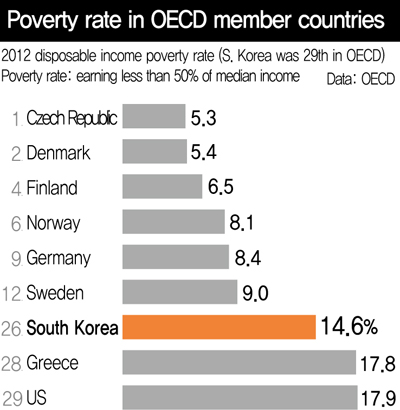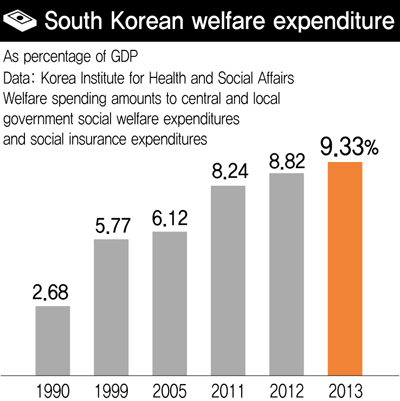1)
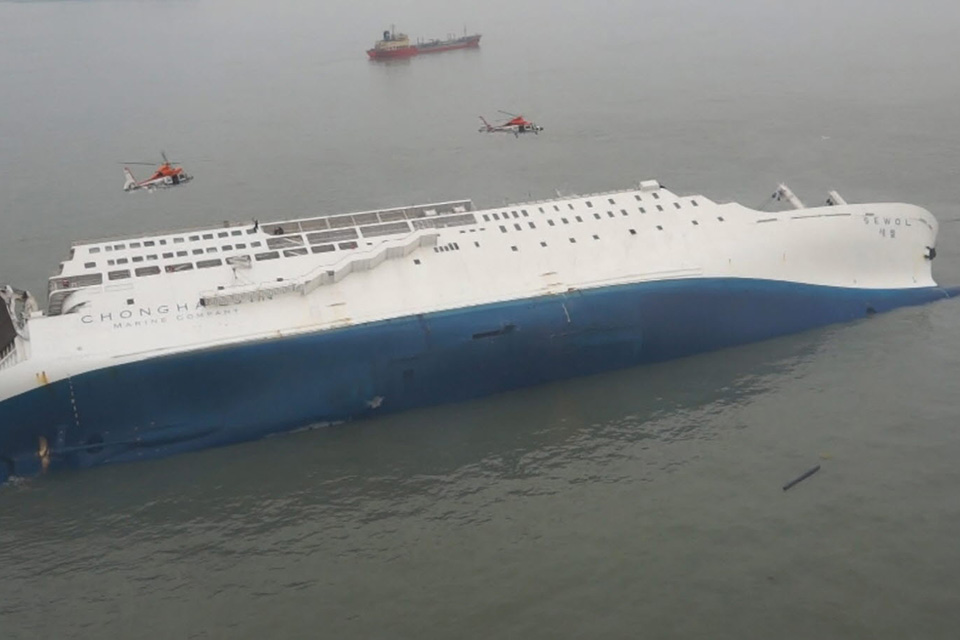
“Accidente donde murieron 304 personas en un barco hundido. Entre ellos 246 eran estudiantes de preparatoria de la misma escuela, que fueron de viaje a Isla Jeju. Después de que sucedió la tragedia, los padres que perdieron sus queridos hijos en el accidente están pidiendo el comité independiente para investigar el caso. Como el gobierno y la presidenta Park lo están negando, los padres aún están luchando en las calles por esta causa”
El 16 de Abril de 2014, al sur de la península de Corea, un barco se hundió en el mar Jindo. Sobrevivieron pocas personas, incluyendo el capitán y el personal del barco. Mientras el barco se estaba hundiendo, la administración Park, la Policía y la Fuerza Marítima no pudieron rescatar a ninguna persona de las que estaba dentro del barco, ya que no había ni plan ni organización.
El cambio ilegal de la estructura del barco, las cargas excesivas, la corrupción de funcionarios del gobierno y la falta de capacitación del personal son las causas principales que provocaron esta tragedia. Aunque la ciudad donde vivían los 246 estudiantes fallecidos se sumergió en una profunda tristeza, ninguno de los padres de estos estudiantes pudieron escuchar las causas por las que sus hijos murieron en un barco tan grande.
Los padres han luchado por defender la verdad de este hecho contra el gobierno durante un año. Ellos han realizado todo tipo de acciones como protestas, las manifestaciones, huelgas de hambre, etc. Después de luchar durante 1 año, aunque se hizo posible una legislación especial para investigar el caso, el gobierno redujo el presupuesto y el personal, de modo que los padres tuvieron que volver a salir a calle para manifestarse.
En esta lucha, los trabajadores, las activistas y SST están reuniendo sus fuerzas junto con los ciudadanos, como forma de solidaridad. No cabe duda de que si la verdad llega a conocerse sin que el gobierno asuma su responsabilidad, la democracia y la justicia de Corea retrocederían.
2)
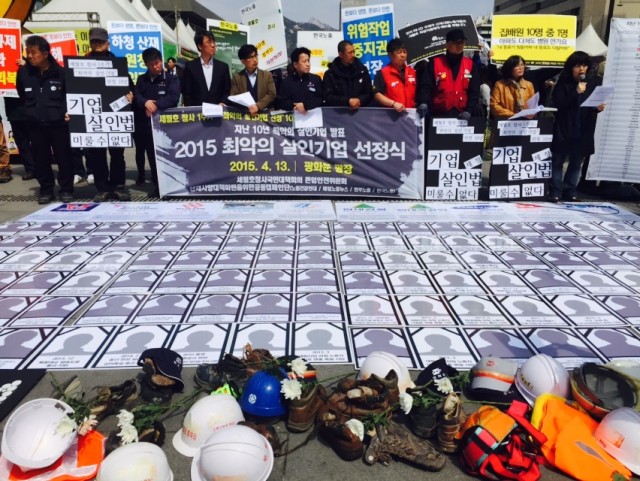
Durante los últimos 10 años, SST ha realizado investigaciones sobre los números de las muertes de los trabajadores, así como revelando el nombre de la empresa, llamando “la pésima empresa que mata la gente”, igual conmemorando a los trabajadores fallecidos. Corea del Sur se encuentra en el primer lugar entre los países de OCDE donde surgen más casos de muertes de los trabajadores, y esto no ha cambiado en los últimos 10 años. En Corea, las empresas tienen más beneficios y menos impuestos, siendo muy tolerables a la corrupción y el crimen empresarial. En este ambiente, los problemas, como el bajo salario, muchos empleos informales (más de 50%) y las condiciones desfavorables, siempre han sido cruciales y graves.
Sobre todo, los trabajos que corren mucho riesgo como la construcción, la fabricación de barcos y la industria de acero son para los trabajadores informales subcontratados, quienes se encuentran más vulnerables a los accidentes que provocan las muertes. Estos se convierten en los problemas sociales más polémicos, ya que la mayoría son las empresas más grandes en Corea.
El gobierno de Corea, incluso, los coreanos, suelen considerar que las muertes provocadas por los accidentes industriales son “inevitables”. Por lo mismo, hay poco consenso de que la empresa tenga que asumir la responsabilidad por la muerte del trabajador en el puesto de trabajo. SST ha alegado que si la empresa no hace nada, aunque se pueden impedir los accidentes a través del mejoramiento del sistema de la administración y/o la inversión correspondiente, ello ya es un acto criminal que se comete contra los trabajadores.
En abril del presente año 2014, se revelará la lista del nombre de las empresas que han cometido más crímenes en contra de los trabajadores, y seguro que la más grande será seleccionada “de honor”.
3)
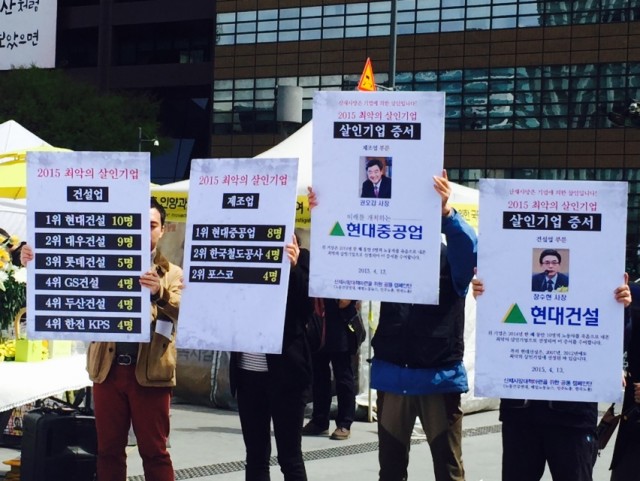
Este año, lamentablemente, habrá una lista más, donde se incluye el hundimiento del barco que hubo en el año pasado. En esta lista, se incluirán además las empresas que han provocado los accidentes contra los ciudadanos durante los últimos 10 años, ya que estas empresas se van olvidando con el tiempo, de tal manera que las mismas empresas habían podido evitar sus responsabilidades. Por lo tanto, revelando la lista de los nombres de dichas empresas será una oportunidad para recordar las acciones ilegales y criminales que habían cometido contra los ciudadanos inocentes.
Además, se hará una lista de las empresas que han provocado más muertes de trabajadores en los últimos 10 años. En esta lista se incluirá no sólo los casos de muertes provocadas por accidentes, sino también por suicidio, estrés, etc. Debido a las largas jornadas de trabajo impuestas por las empresas, los trabajadores de Corea con el riesgo de ser despedido, están sufriendo mucho de la enfermad no sólo física sino mental, que en un momento dado puede llevarles a la muertes o al estado de estrés que provoca un serio daño físico y mental.
Por ello, la lista de las empresas servirá como modo de advertencia contra la forma de administración que estas llevan. Seguro que en la lista se incluirán las grandes empresas y las gubernamentales.

